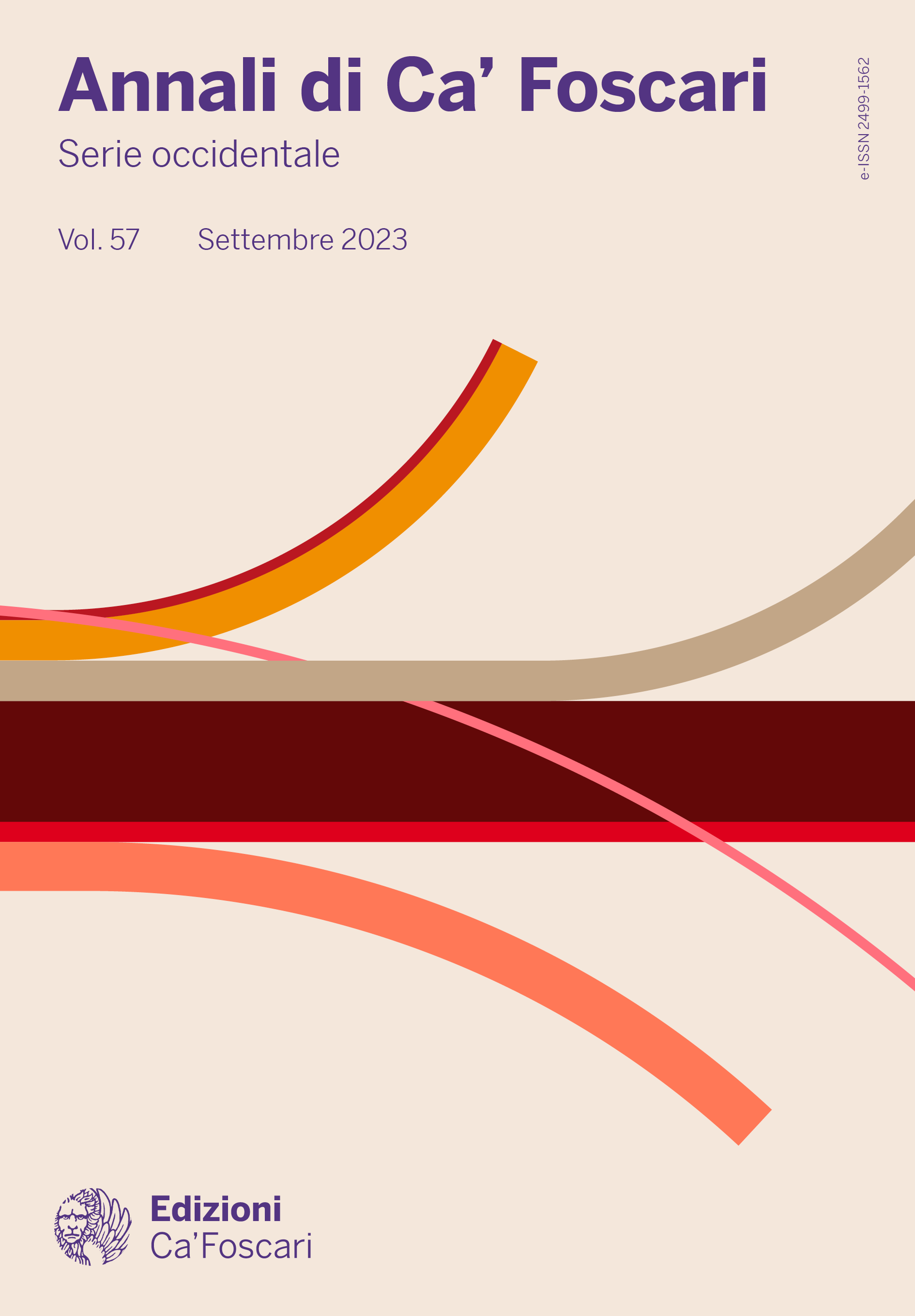Journal |
Annali di Ca’ Foscari. Serie occidentale
Journal issue | 57 | 2023
57 | 2023
open access | peer reviewedKeywords Phonology • Italian Sign Language • Haitian Representations • Magical realism • Body • Teaching Russian as a foreign language • Toni Morrison • The Identical • Space • Haitian Revolution • Parasitic scope • Swedish Contemporary Literature • Sylvia’s Lovers • Sociolinguistics • Transformism • Wolfgang Hilbig • Desire • God Help the Child • Culture • Yugoslav Diaspora • The Advantages of Defeat • Instruments • Identity • Semantic incorporation • Travel Rhetoric • Napoleonic Wars • Postmodern I-dentity • Syntax • Editorialization • Nineteenth-century American literature • Language variation • Relative clauses • Anti-Slavery movements • Degree of Causalness • Japanese • Corpus • Unmarked/Marked Anticausatives • Nineteenth Century Haiti • The mono-clause analysis • (l) vocalisation • National culture • Charles Eliot Norton • Elizabeth Gaskell • Code/Genre/Gender-Rewriting • Prison libraries • Practice • Italy • American Civil War • General Leclerc • Colorism • Unmarked/Marked Causatives • Accessibility hierarchy • Emily Dickinson • Spoken French • John Ford • Collaborative project • Intercultural dialogue • London English • Digital critical publishing • Intercultural communicative competence • Enchantment • Reader-response • Angela Carter • Intercultural communication • Lexicon • Definiteness • Shoah • Early Modern literature • Exoticism • Happiness duty • Superlatives • Melancholic migrant • Italian • Incest • Semantic recoverability • Linguoculturology • Violence • The indirect passive • Post-migration • Huckleberry Finn • Resumptive pronouns • Psych Verbs • Causative/Anticausative Alternation • Internationalism • Pedagogy • Cultural studies
Permalink http://doi.org/10.30687/AnnOc/2499-1562/2023/11 | Published Oct. 30, 2023 | Language fr, it, en
Copyright © This is an open-access work distributed under the terms of the Creative Commons Attribution License (CC BY). The use, distribution or reproduction is permitted, provided that the original author(s) and the copyright owner(s) are credited and that the original publication is cited, in accordance with accepted academic practice. The license allows for commercial use. No use, distribution or reproduction is permitted which does not comply with these terms.
Linguistica
- L-Vocalisation in London English
- Oct. 30, 2023
-
Instrument syntactic realization in Italian and LIS
A cross-modal comparative study and implications for interpreting practice - Oct. 30, 2023
Letteratura, cultura, storia
- Det är nu det vänder: Il gusto della malinconia e il dovere della felicità nel romanzo En svensk kändis di Alma Kirlić
- Oct. 30, 2023
- Il corpo come spazio e la pratica della scrittura: Die Weiber (1987) di Wolfgang Hilbig
- Oct. 30, 2023
- Saint-Domingue : un paradis perdu ?
- Oct. 30, 2023
- S’initier aux écrits littéraires du XVIe siècle par le site Tragiques Inventions : une pédagogie du hand reading
- Oct. 30, 2023
- Letteratura e carcere in America. Il caso Theo Padnos
- Oct. 30, 2023
-
Imaginary Transatlantic Crossings
Configurations of Domesticity and Foreingnood in Emily Dickinson’s Italian Atlas - Oct. 30, 2023
Recensioni
- Federico Maria Sardelli. Il volto di Vivaldi
- Oct. 30, 2023
